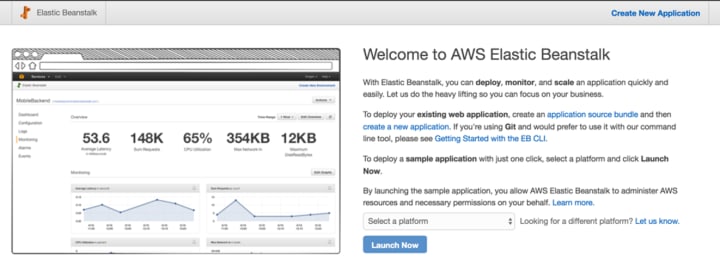How to deploy spring boot to AWS
In this post, we will talk about spring boot AWS and show how to deploy a spring boot application with the help of Elastic Beanstalk.

In this post, we will talk about spring boot AWS and show how to deploy a spring boot application with the help of Elastic Beanstalk. We will also show how spring boot configuration can be customised with the help of environment variables. Read on to get the answers to these common and basic questions. This article created with help from Devglan.com.
What does AWS Elastic Beanstalk offer?
Before you decide to install spring boot, you should bear in mind that AWS Elastic Beanstalk has been offering an approach that is similar to the application deployment. It is known to provide convention over configuration and allows a person to dig under the hood in order to make mandatory adjustments, whenever needed. This is what makes elastic beanstalk a suitable option for spring boot.
We have specifically used a sample application called gs-accessing-data-rest, which has been provided along with the Accessing JPA Data. It should be noticed that the repository is present in GitHub.
What is a spring boot?
A technical team of professional online service has made it clear how to buy an essays as the spring boot can be described as an easy and quick way to build production-grade spring framework-based applications. In order to achieve the task, spring boot is presented with different auto configuration modules that can be used for different libraries. These libraries are used along with the spring framework, and this phenomenon is regarded as a convention over configuration.
Anatomy of the Sample Application
The sample application is a simple and comprehensive and is based on spring boot. It can leverage the spring data rest and sprint data projects. In order to ensure spring boot deploy, the default configuration will use a memory database known as H2. The application can expose the REST-based API. Some of its main properties are pagination, HAL or Hypertext Application Language, ALPS or Application-Level Profile Semantics and Hypermedia as the Engine of Application State (also known as HATEOAS). It is known to have a model called Person along with properties like first name, last name, and id.
Building and Bundling the Sample Application
It’s time to build and bundle the sample application. We will only talk about the basic things, and in-depth details can be found by making a professional research as writers from EssayWritingService do before writing an essay. In the first step, the repository will be cloned from GitHub, will add “MySQL-connector” to build further steps, compile it properly and generate the “fat” JAR that consists of different library dependencies.
Set Up an Elastic Beanstalk Application
The next step is to set up an elastic beanstalk application. For this purpose, a service spring app can be tried; or else, you should sign in to the AWS management console and go to the elastic beanstalk console. You might see the welcome page and will then be directed to the list of applications. Complete information is shown in the image below.

Now, you have to select the create new application option and a wizard will be opened that will let you create an application in a suitable environment. This application will be the top-level container of the elastic beanstalk that will have different application environments. The best ones are prod worker, dev and prod web, prod, qa worker and qa web. An overview of this has been given in the image below.

In the final step, the wizard will let you review different settings so that you can have an idea of whether the process is completed correctly or not. We suggest you review the configuration carefully and then you can launch the environment. Once the application has been launched, you will see something like the following.

Once the resources have been fully deployed and the said environment has been efficiently created, you will begin seeing the notice that the health is reported to be severe. The reason is that the spring application will need some alterations, changes or configuration. I am sure you will try these steps to get things done.

Once the configuration is complete, the next step is to test spring boot in the cloud. For this purpose, the REST API will be used. The URL you have configured on this environment in order to access the service will be configured. An example of this has been given below. For the first test, you can do the HTTP GET on the URL’s root and try the following method. Remember that you will need a lot of time to deploy and manage different applications on AWS.
If you follow these steps properly, it will be easy for you to deploy spring boot to AWS. The best part is that you can access as many configuration options as you like. All of these options should be used when the setup is being run and the process is being completed. Modifications can also be done; there are many other options too, which you can use to customize the deployment.






Comments
There are no comments for this story
Be the first to respond and start the conversation.